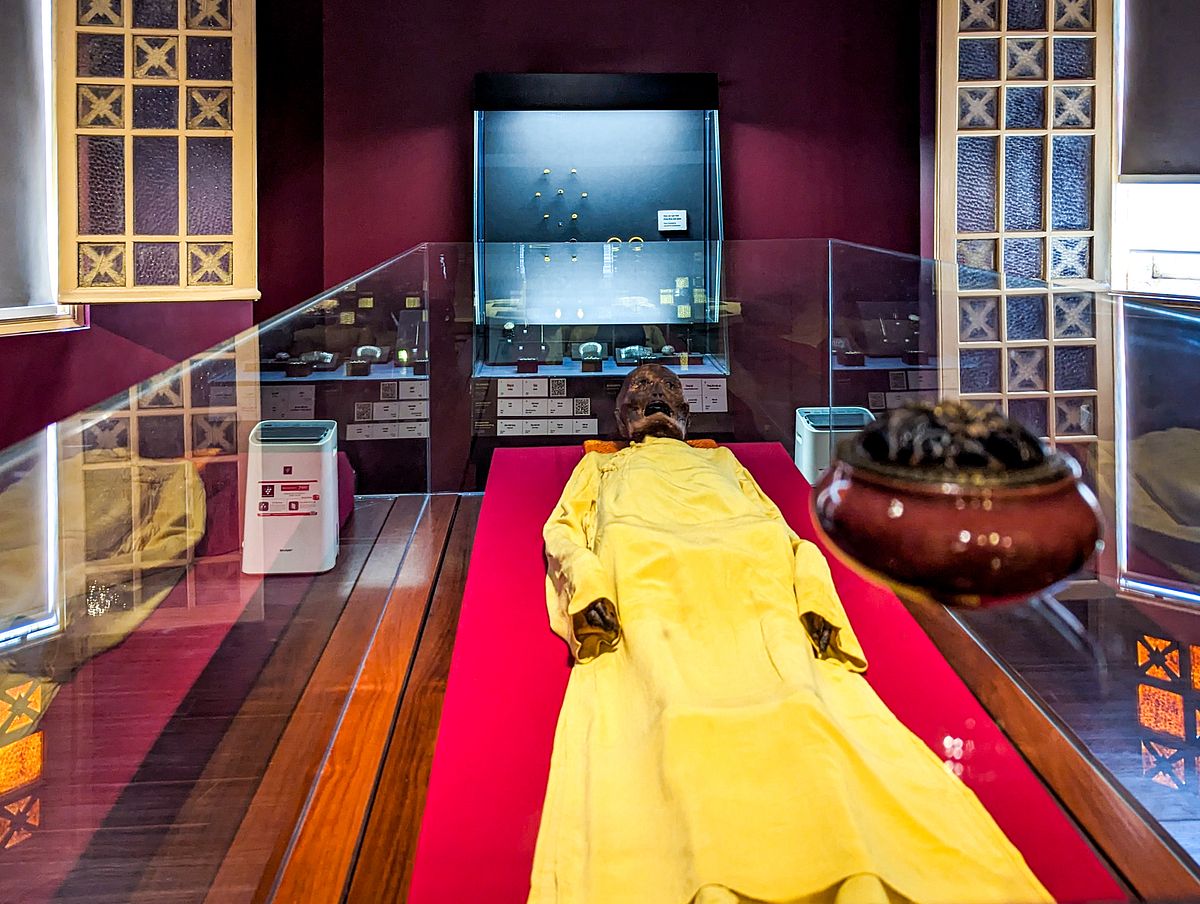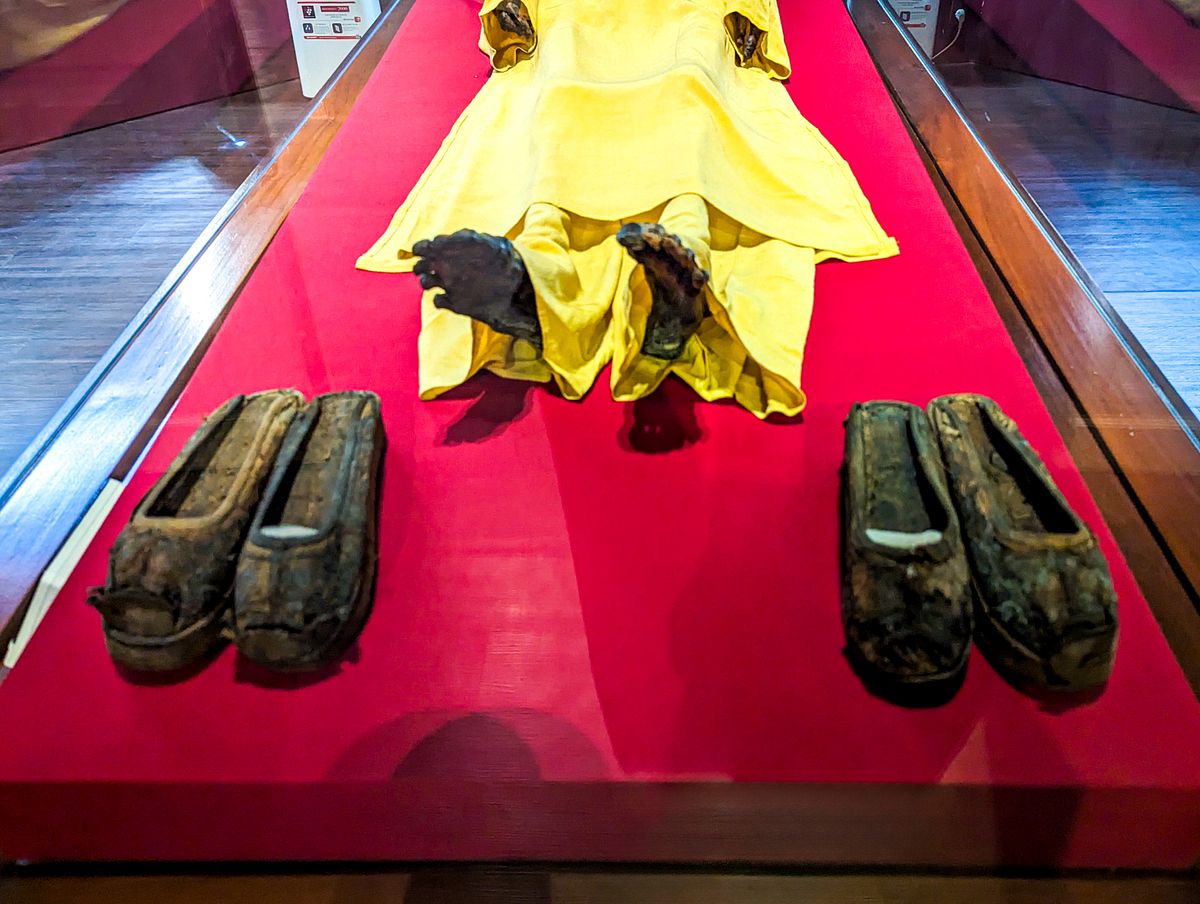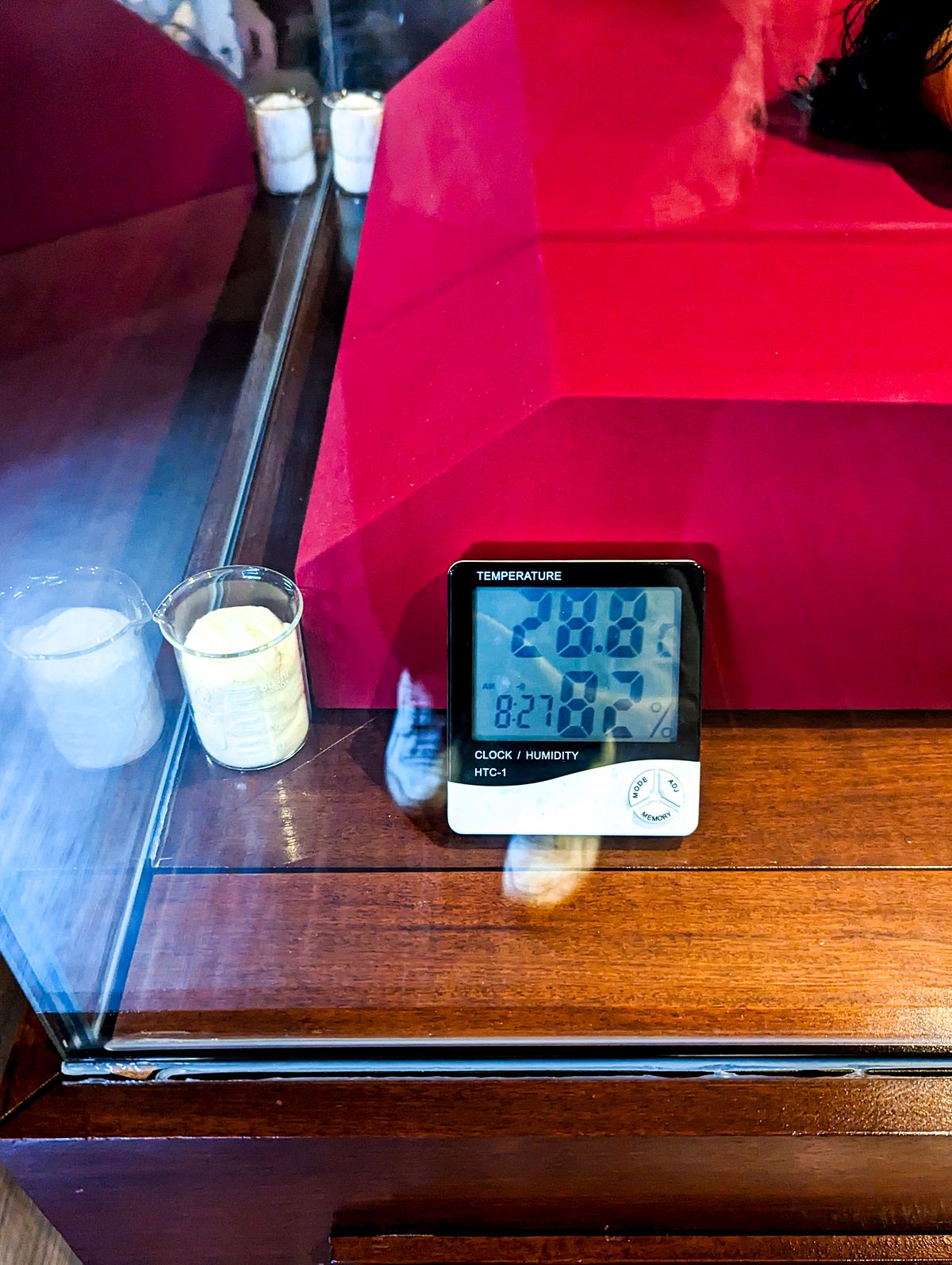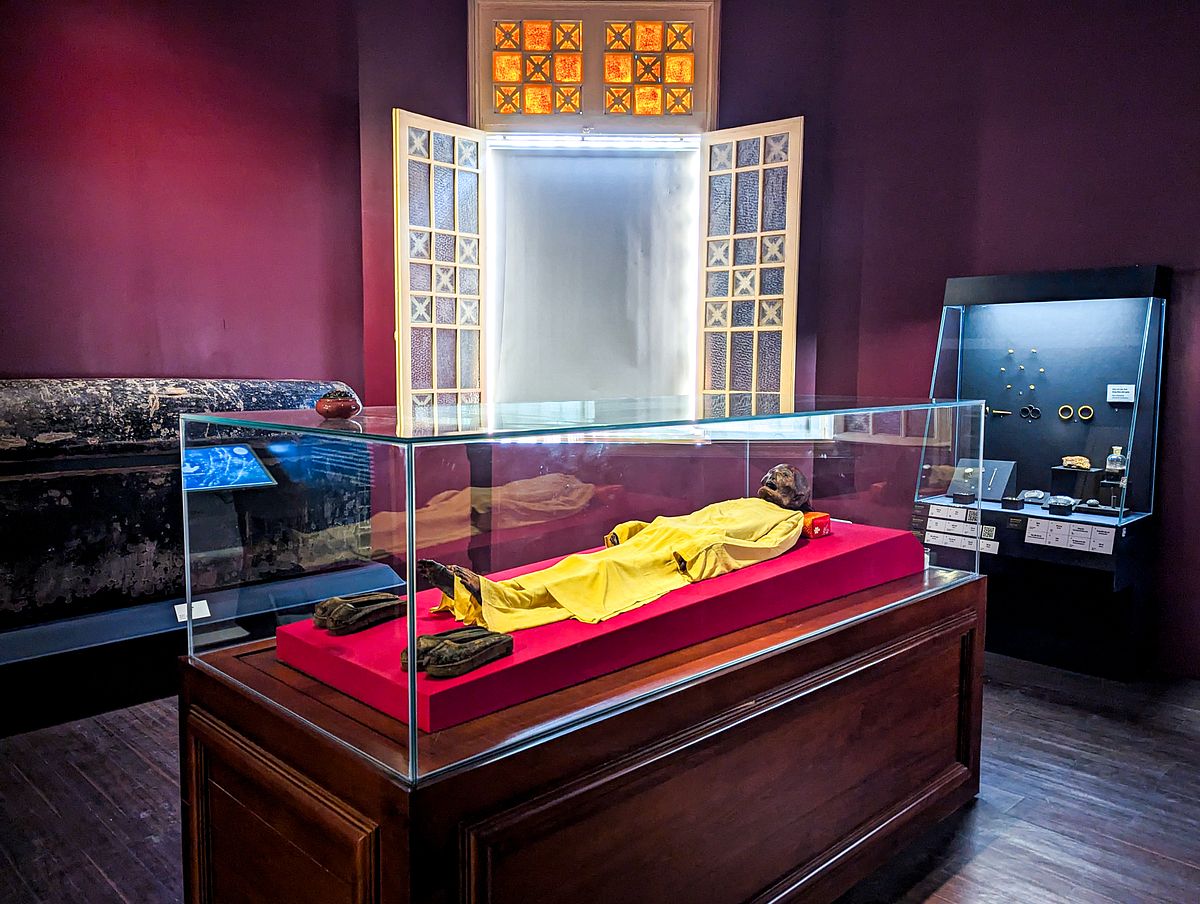Why is there a mummy on display in Saigon?
The question is not "Is there a mummy on display in Saigon"? A simple visit to the Vietnam History Museum beside the Saigon Zoo confirms that there is. It’s believed to be the mummified remains of Nguyễn Thị Hiệu, a relative of Gia Long. Her body was discovered fully preserved within a previously unknown tomb in Xóm Cải, District 5 when the area underwent renovations in 1994. Interred with various indicators of wealth including gold and jewelry more than 200 years ago, xác ướp xóm Cải (the Xóm Cải Mummy), as she has been dubbed, was approximately 60 years old when she passed. The meticulous steps involved in her burial, including embalming fluid and bright red paint that served as a waterproof sealant, protected her from decomposition. After being examined by experts at the Ho Chi Minh City Medicine and Pharmacy University she has been displayed in her own room at the museum. But why?


Historically, museums offered visitors rare opportunities to acquire knowledge. And while mass media and the internet have largely taken over this role as primary transmitters of detailed information, seeing objects in person can still incite unmatched awe and curiosity. Coming across this exhibition might compel one to conduct outside research into the concept of mummies and learn that they are not all wrapped in gauze and buried within Egyptian pyramids. Rather, specific cold, dry or airtight conditions create “accidental mummies.” Vietnam in fact has several other examples of these including xác ướp xóm Cải.

But there is little more information included with xác ướp xóm Cải and none that can enhance one’s understanding of the history of Vietnamese society in accordance with the museum’s general purpose. So besides potentially arousing interest in inadvertent mummification, I’m not sure that the exhibition is worth the risks. And there certainly are risks. Saigoneer isn’t publishing photos of the mummy’s face in close-up because the rather gruesome appearance has the potential to traumatize readers. The impact could be even more extreme in person. And perhaps more importantly, I don’t know what permissions are needed or were granted by Nguyễn Thị Hiệu’s descendants to showcase her. While her body is covered respectfully and a generally dignified atmosphere surrounds the exhibition, it’s hard to think anyone hopes a relative’s body will end up on public display, the sound of motorbike traffic and street vendors seeping in the windows while tourists pause briefly to stare at her time-warped expression before shuffling off to the next specimen.
Ultimately, each visitor can decide what to glean from xác ướp xóm Cải and if there is value in it being on display at all. Maybe you’re like me and find museum artifacts to be dispensaries of tangential joy, fodder for personal amusements. To keep Nguyễn Thị Hiệu preserved, she must be carefully kept at approximately 29 degrees Celsius. This is my preferred temperature as well and for the rest of my life, I shall request rooms to be set at “xác ướp temp.” And when my life is over, do with me what you wish.
















